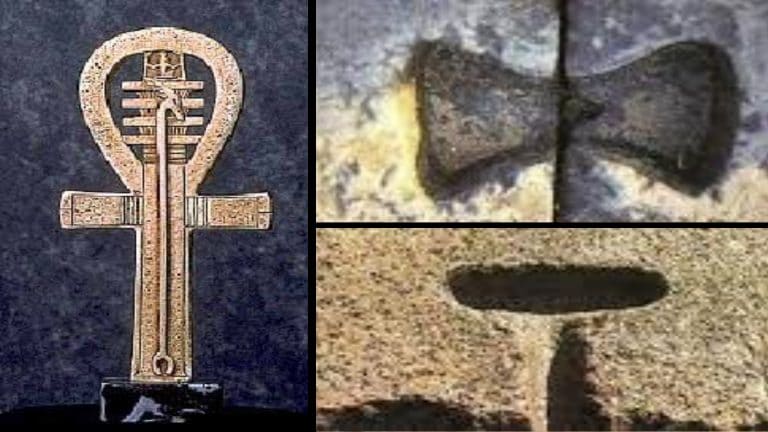One of the cardinal factors behind our fascination with ancient structures to this day is due to the astounding accuracy with which huge stones have been carved, shaped, and attached meticulously. However, taking a thorough look reveals an evident ambiguity in the mainstream narrative.
Tradition and culture gravitate towards the notion that ancient tools and human elbow grease are what made these achievements possible. However, there is no convincing justification for why all these construction approaches and aesthetics share so many parallels.
Missing Pieces of the Puzzle
Construction is one mystery in its own right, but there’s another thing to ponder upon: Where did all the tools go off to? And why isn’t there any documented proof of these astonishing construction techniques?
We need to reflect on whether this information has deliberately been kept confidential, or has it all been in front of us? Could it be that the hidden secret is actually ephemeral sounds and vibrations?
The ‘Sailing Stones of Egypt’
An ancient Arab historian and geographer’s old descriptions suggest that sound was used by the Egyptians as a means for transporting stones and boulders. He was also regarded as the Arabs’ Herodotus and preserved a centuries-old legend in 947 AD.
According to the legend, during the pyramids’ construction, the creators positioned devices described as magical papyrus underneath the mighty stones used in the structure. Then, one by one, all of the stones were struck by only a rod of metal. The stones then mysteriously raised to the air and methodically paved pathways surrounded by metal rods.
The Was-scepter
Egyptian deities, celestials, and gods such as Anubis are no strangers to us. Anubis is often portrayed standing high with an odd, rod-type object in his hand. However, many are unaware of the true nature of Anubis’ rod. It comes as a staff having a forked bottom, coupled with a barbed head that’s sculpted somewhat like an ornate canine.
This unusual object is widely known as a Was-sceptre. The rod, which is eerily straight and thin, is often correlated with other queer articles such as the Ankh and the Djed. It’s worthwhile to think about whether they were used as some kind of tools, or simply carried symbolic importance.
If we look at the ancient Egyptian artwork and architecture, we’ll notice that there are three symbols appearing everywhere. The Ankh, the Djed, and the Was-scepter. 
Tuning forks are also featured on a statue of Isis and Anubis grasping a rod. Between the two celestials, an engraving displayed two tuning forks that appear to be joined via wires. A rounded article housing four prongs is positioned under the forks, looking very much like an arrow pointing upward.
In our video about ancient stone cutting devices, we discussed a thought-provoking yet unverified email from 1997. The email contents point towards the notion that Egyptologists discovered archaic tuning forks and might have categorized them as “anomalous” upon being unable to determine what they could use them for.
“Some years ago an American friend picked the lock of a door leading to an Egyptian museum store-room measuring approx 8 feet x ten feet. Inside she found ‘hundreds’ of what she described as ‘tuning forks.’
These ranged in size from approx 8 inches to approx 8 or 9 feet overall length and resembled catapults, but with a taut wire stretched between the tines of the ‘fork.’ She insists, incidentally, that these were definitely not non-ferrous, but ‘steel.’
These objects resembled a letter’ U’ with a handle (a bit like a pitchfork) and, when the wire was plucked, they vibrated for a prolonged period.
It occurs to me to wonder if these devices might have had hardened tool bits attached to the bottom of their handles and if they might have been used for cutting or engraving stone, once they had been set vibrating.”
While the email can only be regarded as an unscientific testimony at most, it certainly appears to attest to the hieroglyph regarding tuning forks on Isis and Anubis’s statues, with wire stretching out between the tines.
In addition to that, a considerably older Sumerian Cylinder seal is also visible, displaying a tuning fork being held by someone. Taking a closer look helps us realize how ancient people seemed to be more well versed with sound and vibration than us. This particular interest in tuning forks suggests that these people knew something we currently don’t.
Nowadays, we are constantly innovating and coming across new ways to study ancient objects and structures. Archaeoaccoustics demonstrate sound’s massive significance in the construction of historical sites across the globe.
Meanwhile, looking into cymatics helps us understand exactly how vibrations are capable of altering the geometry and structure of matter in precise and astonishing ways. Alongside these, Quantum mechanics continue to play a vital role in exploring the exact nature and functioning of matter via AI.
Have we finally approached the milestone of figuring out how the earth’s ancient populations were able to erect massive structures and monuments across the globe?


